The Failure of Superwoman?
My friends call me Superwoman. Singlehandedly I juggle work, music, and motherhood, and still manage to get dinner on the table before my husband comes home at night. You can find me lecturing on Baroque Music and Beethoven in the university, composing electronic music until the late hours of the night, teaching my baby girl proper fingering on the piano, and trying to find ways to buy organic vegetables while cutting my grocery budget by another ten percent.
I appreciate the empowerment my mother’s generation gave to Generations X and Y. We grew up believing that we could have it all. Despite all of the bad publicity for being “slackers”, we believed that a woman could perfectly balance work, her dreams, and her family without a cost. My parents taught both my sister and me that we could be the best, and that we were the best. I am the overachieving product of an immigrant family, another alien wondering about this lost land.
I am Superwoman. I am tired.
Several months of putting in full time hours in my spare time has sucked me dry. I want to hang up my superhero cape, put away the neat utility belt, and just blend in with everyone else. Musical ideas nag me constantly, but who has time for a symphony when baby has an ear infection, there are fifty papers to grade, and time with hubby is already nonexistent? So many notes flying around in my head, floating and dying, with no creative outlet, like a million snowflakes in a blizzard. They disappear, and I hope that someday I will again have the time to write something great, or just have time to breathe.
I am Superwoman. I am not alone.
As the economies of the world crumble to dust, and millions more join the short path to poverty, billions of Superwomen keep each nation alive. They feed the world’s children, till the barren soil, attempt to help the fledgling generation that is our children have a fighting chance in a rapidly decaying environment.
How much longer can the Superwomen fight before kryptonitic exhaustion robs them of their waning powers? Are we the shadows of women’s liberation, or are we the soldiers of the New Great Depression? Are we forging a new path or are we simply trudging along a well-beaten trail? Only the herstory books a century from today can tell.
Look in the mirror, my sister. You might find the face of a Superwoman staring back at you.
__________
Sabrina Peña Young is an Intermedia Composer teaching at Murray State University and an experienced blogger. Her specialties are composition, technology, world music, percussion, and film & video.
Encounters with Contemporary Women Composers Part 4
The World of Linda O’Keefe: Color, Concept, and Composition…
In 2008, Linda, a Dublin born composer, was in Chicago experimenting with building her own instruments, including small synthesizers. She started to compose music for these new instruments. In the past, her works were primarily based on manipulated recorded sounds and vocal performances. She had worked with instrumentalists whose backgrounds were in jazz and the idea of composing in the “traditional” sense was never part of her training.
While in Chicago, she met Guillermo Gregorio and discovered his works of graphic notation. Guillermo uses color in his notation systems, and this piqued Linda’s interest to study the works of Schoenberg and Kandinsky. Now newly inspired, Linda continued her study of how instruments worked and what information she could provide a musician that would enable the interpretation of her ideas, while still allowing room for improvisation in composition. This lead to her writing a composition that was performed by Eric Leonardson and Guillermo Gregorio entitled ‘Anomaly of Memory’.
She says, “It was an enlightening process, as there were issues of control which arose from this type of composition. Guillermo performed on sax and clarinet, while Eric performed on his instrument the Springboard. Linda performed with her computer. There are moments when you are composing with the graphic score that you are looking for a very specific type of sound or emotion expressed. This means exploring in detail how this is written, drawn or notated, and understanding that each performer will interpret it differently. The interpretation is the area where the composer gives up a measure of control. In the performance of the piece, there was a definite tension, a search for meaning within the score, and a time for improvising. The improvisation helped make the experience both terrifying and very exciting.
‘Anomaly of Memory’ is about the idea of repetition, endings and beginnings. The design was based on images from moments of memory, miniature drawings that she had done of parts of places and pieces of things…tiny parts of a bigger whole. The images were there for improvisational purposes, and the notation was there as a guide to startle the memory and then to find a sound that each performer wished to repeat. Linda explained, “Each performer starts to listen to each other and repeat what each performer is doing even sub-consciously, which happens in a number of sections. Tension happens when dissonance occurs and each performer is somewhere else in the interpretation of the image.” She used color in this work to see if it had any effect on the performance. “Apparently it did,” she said, but she can’t explain how just yet.
What is Linda up to now? She has been working on two projects, one of which is a graphic score composition exploring Marxist-Capitalist ideas. She wants to research industrialization in the modern period and its influence on music and sound. This is a very large project and she has been working on it for two years. She wishes create this composition for singers, sound artists and acoustic instrumentalists while at the same time designing a graphic score that is both interpretive and guiding and as she says, “a balancing act.”
Her second project is expected to be on CD this August 2010 by Farpoint recordings. It is a digital composition about sound and Christian Evangelicism. The concept explores sexuality and religion, and the use of the voice as a tool in street preaching. She started the piece as a soundscape of American street evangelism and then continued on with the examination of sexuality within Christianity. She says, “The link between the ecstasy of preaching and sexuality and the dichotomy this has in the church fascinates me.”
For more information about Linda O’Keefe, PhD Fellow N.U.I.M
http://www.lindaokeeffe.com/
http://www.fafartists.com/
__________
Theresa Sauer is the author/editor of Notations 21, an anthology of innovative visual notation from around the world. She is the Director of the Notations 21 Project. She lectures, curates exhibits, produces concerts, and also composes music using innovative music notation. She is in the process of developing a documentary about Notations 21.
For more information visit: website: notations21.net and blog: http://notations21.wordpress.com/
The Internet: Patron of the Arts
Western classical music has historically depended on patronage for artistic creation. The Church, kings and queens, presidents, the wealthy, and even educational institutions have previously played an important role as patron to the arts.
With the current crashing economy, in the United States at least, where supporting the arts is supplanted by everything from subsidizing agribusiness, lining the pockets of wealthy corporate executives, and supporting greedy and shortsighted elected officials, musicians have had to depend on public institutions like the university or even secondary education to receive any sort of funding and support. However, with schools and universities dooming arts education to oblivion by cutting budgets by enormous percentages, where can the professional musician turn? Who will fund the arts in the 21st century?
The answer is not a who, but a what: the Internet.
The Internet provides professional musicians with literally thousands of unique opportunities for performance, teaching, writing, and publishing that no longer exist through traditional music industry practices. All a professional musician needs is a fast internet connection, a convincing multimedia website, and time to network.
Do you want to reach thousands, or even hundreds of thousands, of eager classical music fans with your new solo album? Don’t waste your money on an agent and a record company unless you are “pop” enough to be “popular” to the masses. Instead, you can record and publish your album, sell it through dozens of reputable music distribution sites, market through social networking sites, and even set up live gigs with online contacts. What is even more phenomenal is that you can accomplish all of this for about $100.
In the last year alone, networking through the internet has given me the opportunity to design a music course for an online university, write hundreds of articles for various websites, compose a music theory album, and teach a virtual music history course. Next up is a film score for an independent film, another hundred articles, and possibly three more albums. Oh, and I also design clothing and am working on a bilingual music education website.
p.s. I am a full time mom who only has time to work in her “spare” time.
Why do I think this is important? Because too many classical musicians have convinced themselves that if they cannot perform in a professional orchestra, get a record deal, become a tenure-track professor, or become a highly-paid music director that they need to throw in the towel. What’s worse is that many of these classical musicians convince their students that the arts are dying, when the opposite is true. The arts are thriving, yes, thriving despite economic disaster.
So I encourage you to create a snazzy free website, to start a music blog, to post a video of your last concert on U2B, to self-publish a book or two, connect with musicians halfway across the globe, twitter away, and take advantage of our new patroness’s generosity.
_____
Sabrina Peña Young is an Intermedia Composer teaching at Murray State University and an experienced blogger. Her specialties are composition, technology, world music, percussion, and film & video.
Daring Divas 3: Finding Repertoire: Publishers to Explore, Part One
Greetings all! There are quite a few wonderful resources for classical vocal music to explore, and I’d like to share a bit about each that I’ve found. If I haven’t mentioned one that you know about, please do feel free to share their information in the comments section. The first two companies have absolutely huge catalogues with an amazing selection.
The first company is Classical Vocal Reprints, owned by Glendower Jones. Mr. Jones is passionate about his repertoire, extremely knowledgeable, and always more than willing to share information about the music he has in his catalog. If you call the company’s main line you will likely speak with him directly. He is a generous man; in 2007 I participated in the National Association of Teachers of Singing Intern Program, and he generously donated multiple music scores to all twelve of us! He is the main publisher for Lori Laitman’s songs, and also carries the music of IAWM members Judith Cloud and Joelle Wallach. In addition to Laitman’s music, I purchased a wonderful selection of spirituals by Jacqueline Hairston (niece of African-American choral composer/actor Jester Hairston) from his site, and highly recommend them for singers of all levels. I also see that Jones carries the music of American composers Lora Aborn, Vivian Fung, Valerie Saalbach, Evelyn Simpson-Curenton, and Joyce Hope Suskind. He also carries some music of Beach, Chaminade, and publishes Baroque music through Green Man Press. So much to explore…and when budget allows I cannot wait to explore the vocal music of many more of these composers. The website: http://www.classicalvocalrep.com/
Company #2 has a similar wonderful owner: Walter Foster of Recital Publications. He carefully selects each piece of music he carries, and is very accessible for dialogue if you are interested in the music of a particular composer. (He even put me in touch with an additional European publisher for a composer I was researching.) His focus is on late 19th and early 20th century art songs from many countries, with some additional genres such as concert arias, duets, and vocal chamber music. I researched and discovered the music of Giulia Recli, Mary Turner Salter, Adela Maddison, Bertha Frensel Wegener-Koopman, Mathilde von Kralik, Yvette Guilbert, Helen Hopekirk, and others through Foster’s great reprints. Many items in his catalog are public domain materials reprinted for modern use. This is a bonus for recording and performance purposes! In addition to the above composers, the following female composers are included in the RP catalogue: Frances Allitsen, Dina Appeldoorn, Adele Aus der Ohe, Agathe Backer-Grondahl, Amy Beach, Lili and Nadia Boulanger, Gena Branscombe, Cecile Chaminade, Henriette Coclet, Eva Dell’Acqua, Cécile Dufresne, Eleanor Everest Freer, Mme. Marie de Grandval, Marie Hinrichs, Augusta Holmes, Elisabeth Kuyper, Margaret Ruthven Lang, Liza Lehmann, Lise Maria Mayer, Catharina van Rennes, Clara Kathleen Rogers, Lady John (Alice) Scott, Hilda Sehested, Rita Strohl, Julie Weissberg, Maude White, Elsa Laura von Wolzogen, and others. If I win the lottery I will purchase the complete catalogue!!! In the meantime, there is much to explore and many female composers worthy of research and consideration. I highly recommend this company and its incredible owner. The website: http://recitalpublications.com/
In order to do each publishing company justice, I will continue this discussion in another post. Stay tuned, and please comment if you have any experiences to share or any composers you recommend from the above publishers. Thanks for reading!
__________
Julie Cross, Treasurer of the IAWM, is a mezzo teaching voice, diction, and vocal literature at the University of Wisconsin, Whitewater. She blogs about how performers choose repertoire.
Encounters with Contemporary Women Composers 3
In Rushworth, Australia with a population of 1000, there’s a woman who is doing incredible research concerning musical scores and composition.
Carmen Chan recently had an exhibition at the Shepparton Art Gallery entitled, ‘Do You See What I Hear? Exploring Cross-sensory Experiences in Visual and Musical Arts by a Variety of Interpreters of Graphic Scores.’ At this exhibit were five scores, an audio-visual production of Benjamin Boretz’s ‘Talk’, and some junk instruments she had collected. Two of the scores were exhibited with music, where viewers could listen through headphones, and there was also a performance where visitors played all five scores.
Carmen’s research project is centered at Monash University in Melbourne, Australia where she is doing post-graduate studies. She is mainly interested in how unconventional notation acts as a guide to improvisation. This originated from her experience as a performer in percussion, which eventually led to score making and, in a broader sense, composition. By inviting the public to interpret music from visual materials, she is essentially promoting experimental music making activity. Carmen says, “I was influenced by reading about Cornelius Cardew and his Scratch Orchestra, and I’m trying to explore avenues that allow experimental music activities to happen within a broader community.
I wanted to know more details about her background. She received training in percussion performance at the University of Melbourne under Tim Hook. Next she went to Musikhögskolan i Piteå in Northern Sweden with the intention of practicing ‘standard’ repertoire in isolation. There, she met Gary Verkade, a Professor in Organ, and studied improvisation, interpretation, graphic notation, history, analysis and as Carmen says, ‘everything music’. She began to make her own scores when she was studying Cardew’s ‘Treatise’ with Verkade.
She thought that the most exciting score at the exhibition was the one on the wall and it was completely unplanned, but it worked really well in terms of asking viewers what music they could play ‘from it’, and then inviting them to give it a go. She also put pianos – one upright, one junk, and one prepared in front of the score so people could read the score as they played.
I asked Carmen about the junk instruments and why they were included in the exhibition. She replied, “The junk instruments worked fantastically, both ‘visually’ and for the ‘exotic’ value for music making. The reason for using non-traditional instruments is to disassociate potential interpreters with the idea of trained professionalism, in order to promote creativity.
Carmen is planning on moving this project from the gallery setting at a University into a more community-minded setting, which does not have values of status and authority associated with it. She is very hopeful to engage with more people.
And so, I wished to pursue this idea of scores and the concept of composer. What actually makes a composer? Carmen says, “I suppose I’m not entirely sure about being called a ‘composer’, because I don’t compose music as such, I just make scores, and invite people to interpret them. I’m more of a score-maker, if that’s a word.”
But what do you think about that? Does a score need to have detailed or even minimally guided direction for performance in order for the creator of the score to be considered a composer?
…new territory being explored by an amazing woman in an amazing place.
The recordings of interpretation will be broadcast on Radio Monash soon…for more information on Carmen please visit http://arts.monash.edu.au/music/research/student-profiles.php
__________
Theresa Sauer is the author/editor of Notations 21, an anthology of innovative visual notation from around the world. She is the Director of the Notations 21 Project. She lectures, curates exhibits, produces concerts, and also composes music using innovative music notation. She is in the process of developing a documentary about Notations 21.
For more information visit: website notations21.net and blog http://notations21.wordpress.com/
Peggy McIntosh’s “five interactive phases”
Almost thirty years ago, Peggy McIntosh of the Wellesley Women’s Research Centers spoke on incorporating women into the college curriculum at one of the first national conferences on women’s and gender studies. My, how attitudes and possibilities have changed since 1983! Yet McIntosh’s ideas still offer a lot.
Let me apply McIntosh’s “five interactive phases” or gender-informed attitudes to women and music:
Phase 1. Womanless music
People in this phase simply don’t address the fact that women are in music. Their values tell the story of men in music as if only men exist in music. For example, they present music history as if women have had no part in it—no Hildegard of Bingen or Joan Tower. Musicians in phase 1 are now rare, yet they remain powerful. Thirty years ago, they were the vast majority.
Phase 2. Women in music
In the second phase, a few extraordinary women who succeeded in a man’s world are accepted as having value. Madonna, Amy Beach, Fanny Mendelssohn Hensel—these are seen as proving that, if a woman is talented enough or fortunate enough, she can earn importance. The implication, though, is that most women are not talented or fortunate enough. Many musicians today are stuck in phase 2.
Phase 3. Women as a problem or issue in music
Emotions define phase 3. Some, typically women, are angry or hurt or frustrated—that is, emotional—about the way women are treated or not included. Others are angry or frustrated—that is, emotional—that some people raise gender issues at all. Opinions collide. Feelings are heightened. Some younger women today (“third wave”) see older women (“second wave”) as sitting in phase 3. “Why are they so angry?”
Phase 4. Women as music
In this phase, people are so fascinated with women and music that they center on them. “Women and music” courses illustrate this phase, for they provide a way for women to be the subject of study in a curriculum otherwise almost devoid of them. Some phase-4 people spend much of their career in the world of women-and-music: teaching women and music courses, advocating for women and music, providing models for other women to enter music and succeed. They find fulfillment in phase 4.
Phase 5. Women and people of color and all multiplicities of identity are given equal status in music
Nowadays this last phase is a goal rather than a reality. It is the inclusive world of music, and it allows for musical merit to determine success. Trust me, our world of music shifts greatly in phase 5.
McIntosh points out that a flipflop in attitudes takes place between phases 3 and 4: Women are fully valued in music in the last two phases. McIntosh also points out that we move back and forth from phase to phase, rather than climb a ladder through the phases.
Since 1983, Peggy McIntosh’s work has grown into the related world of multi-cultural and gender-fair curricula. Women in music have, too, as we’ve learned to apply our experiences as women to those other groups who have been excluded from fully participating in music.
__________
Susan Borwick is a musicologist, theorist, and composer teaching at Wake Forest, and she’s also the Secretary of IAWM. Her areas of specialization include women’s and gender studies, and spirituality and the arts. She blogs about teaching “women and music” in a liberal arts setting.
Young Children and Improvisation
My musical career started when I was four years old. I started to play piano because I loved listening music and we had an instrument in our living room. I played by ear before I learned to read music. I played anything I heard and enjoyed.
At the age of five, my mother took me to basic music school to hone my skills. This was shortly after the fall of Communism in the Czech Republic. I had to play Czerny’s Etudes, and Baroque and Classical works: boring pieces I didn’t like as a five-year-old. Several times I wanted to quit but fortunately, I came in contact with new instructors who nurtured my love of music.
When I was fifteen I entered a music school in Prague that included composition and improvisation in the curriculum. I was quite surprised at the difference! I loved it. Nowadays, improvisation is a part of curriculum at most music schools in the Czech Republic.
Improvisation has become an important component of music lessons. And what’s more, it’s very helpful. My friend is a teacher of improvisation. She told me there many ways to teach improvisation. For example, she paints pictures and then shows it to the students (5-6 years old) and says, “Play, play, what you see”.
She told me a story about a very talented seven-year-old girl. She improvised a thunderstorm. She started to play the deep tones: that was thunder. Next, she moved to the right part of the fingerboard and she quickly played high tones: that was rain. Than she started to add more and more tones and used the whole fingerboard. Finally she played a C minor chord which resolved to C major: that was the sun.
Parents of my friend’s students children have said, “Our children are better at classical piano than before and it’s because they do not only concentrate on reading notes and moving their fingers. They listen to what they play. That’s thanks to studying improvisation.”
Improvisation is very beneficial for everyone, for every instrumentalist or singer. It develops color imagination. I’m very happy that improvisation is more readily taught in music lessons.
__________
Eliška Cílková recently moved to Bratislava, Slovakia where she is in her first year studying composition at Academy of Music. She blogs about her experiences as a student at the Jazz Conservatory in Prague.
Encounters with Contemporary Women Composers – part 2
My ongoing research for the Notations 21 Project goes beyond that of the book. There are so many incredible new ideas about notation and performance that I knew the book was just the starting point for me in many ways. I am still asking questions, discovering new visual scores and realizing that the composers in the book are still creating beyond all that I could imagine.
One of these extraordinary composers from the Notations 21 anthology is Ann Millikan. I was so impressed by her innovative work years ago and even more so now. Because of my interest in why composers choose to develop new notation for their works, I chose to discuss this issue with Ann since she uses new notational techniques in many of her works. She responded by saying that many times there is no other option but to create something new on the score.
“I had an interesting challenge recently with an orchestra composition, Trilhas de Sombra, which I recorded with Bulgarian National Radio Symphony Orchestra for my new CD on Innova. The piece has both very loud, brazen sounds, and delicate textures. With the second movement, Snow World, I had in mind a complex sound world containing layers of glass-like high frequencies, clusters, strange murmuring sounds from the natural world, and particular sonic effects. Because this was orchestra, and we would be in a recording situation with no extra rehearsal, it was important for me to make compositional choices that would be easy to understand. I narrowed down the instrument choices so nothing was too obscure, then focused on how to get the sounds I wanted on orchestral instruments, using the most standard extended techniques and notation possible. In this way no explanation was needed and they were able to sight read it perfectly. It was very exciting to extend the notational boundaries for orchestra and have it come together so well.”
But was there another reason to use what may be called “experimental” notation? I continued questioning Ann about her ideas. Creating a level of unpredictability in the performance of her work leads to innovative notational choices as well. She says, “Prior to becoming a classical composer I was a jazz musician, so making the transition to composing aleatoric works for classical players was something I was interested in right away. While most jazz improvisation cycles around the form and harmonic progression of a composition, an aleatoric work can be much more linear and open-ended.
I like my aleatoric scores to be visually stimulating. The structure, palette of sounds, notational key, and performance instructions I develop, are all meant to open a space for the performer to inhabit. I want the score to look like I imagine it sounding. Because they are hand-drawn, these scores have a personal and intimate feel to them that is very satisfying for me to create.”
This led me to pursue the question of performance improvisation. This was always such an important issue when researching graphic scores. Why does a composer opt for improvisation? Having a jazz background, it is natural for her to consider improvisation as a tool when composing. Improvisation works best when she collaborates with her performers. As she states, “If I’m writing a piece for a performer who’s an incredible improviser, then I tend to steer away from standard notation to give them as much room as possible. I’ll meet with them, hear what they like to do on their instrument, and let that inspire the type of vocabulary I use in the piece.”
I didn’t want my conversation with Ann to end without including some discussion of her work that is included in Notations 21. The notation used in the selection from HOUSE OF MIRRORS is visually fascinating and I wondered why she chose to create this very novel notation for this work. The desire to alter the performer’s thoughts and challenge them in new ways was her immediate reply. But I wanted to know more, of course.
HOUSE OF MIRRORS is a set of works she began developing in 2000. The piece focuses on the internal experience of the performer. Thought, kinesthetic awareness, and the inner ear all play an integral part in the development and performance of the piece. The object is to create a realm where the performer is surrounded by sound and stimulus both internally and externally. Various materials are given to stimulate improvisation: the score, resonant surfaces which are excited by using modified speakers, and “sound boxes” that are manipulated with the feet.
Ideally the performer forms a relationship with the score over a long period of time, but because the piece is tech intensive, so far that has been difficult to achieve. She is currently in the process of developing the HOUSE OF MIRRORS Pilot Project. It will include a HOUSE OF MIRRORS installation at Zeitgeist’s Studio Z, working with musicians and non-musicians for a week to a month, and documenting the process on video. She is interested to discover how the performers’ relationship with the piece deepens over time. From there she wants to develop a sustainable mobile installation format that she can take to festivals worldwide.
For more information about Ann Millikan:
check out her new CD: http://innova.mu/artist1.asp?skuID=397
website: http://www.annmillikan.com/
__________
Theresa Sauer is the author/editor of Notations 21, an anthology of innovative visual notation from around the world. She is the Director of the Notations 21 Project. She lectures, curates exhibits, produces concerts, and also composes music using innovative music notation. She is in the process of developing a documentary about Notations 21.
For more information visit: website: notations21.net and blog: http://notations21.wordpress.com/
Early Czech Jazz
As my third report to the IAWM blog I would like to introduce you to the early history of Czech Jazz. We all know that Jazz originated in the early 20th century in African American communities in the South of the United States. Its evolution in the USA was different from Europe. I come from the Czech Republic – the small state located in middle of Europe whose population is only about 10 million people.
Czech jazz also began in the early 20th century. Its most significant early proponent was Jaroslav Ježek, “JJ”. Ježek was born on 25/09/1906 in Prague and he died on 01/01/1942 in New York City. He was almost blind from a young age and he had chronic kidney disease. He studied composition at the Prague Conservatory under Josef Suk. He began studying at the Conservatory when modern dances and American jazz music were first becoming popular in the Czech Republic. Ježek worked with the rhythms and instrumental features of jazz. He also collaborated with Voskovec and Werich, and thanks to them, he performed in the Liberated Theatre. This theatre performed original and lively revues filled with topical political satire against Fascism and social injustices. I could write thousands of words about Jaroslav Ježek, but I just want to say that he left a large catalog (orchestral, chamber, piano works, and songs) and he is regarded as the founder of Czech jazz and popular music.
Nowadays the Conservatory in Prague is named after him. This Conservatory has been existing only for 19 years. For 33 years before that, it had been basic school of arts. The school attracted many excellent students, but in the communist state there was ideological opposition to granting it the stature of a conservatory. The Jaroslav Ježek Conservatory officially opened in 1991. It is hometown of important Czech jazz musicians and is very proudly named after JJ.
__________
Eliška Cílková recently moved to Bratislava, Slovakia where she is in her first year studying composition at Academy of Music. She blogs about her experiences as a student at the Jazz Conservatory in Prague
Encounters with Contemporary Women Composers part 1
Last November, I was down in Denton, Texas on invitation from Dr. Lynn Job. Lynn happens to be one of the nicest people you’d ever want to meet. She is also a dedicated and talented woman composer. Lynn kindly accepted my sincere request that she contribute to the Notations 21 anthology. She arranged lectures for me at the University of North Texas and showed me around town and campus. We ate at the best places, had lunches with the UNT faculty and listened to jazz at Sweetwater’s. Local book events at the ice cream shop and the Art Six coffeehouse left me with so many wonderful memories. Along the way, I met many incredible people. Thank you Lynn!
One very special person that I met from my visit to Denton was Da Jeong Choi. She is a Teaching Fellow, in the Division of Composition Studies and in the Division of Music History, Theory, and Ethnomusicology. She is President of the Composers Forum at UNT as well. She was introduced to me after my first lecture about Notations 21 and graphic score notation. I asked her about her work, and the more we spoke, the more I realized she had fascinating things to share with me about being a contemporary composer.
When I returned home after that whirlwind trip, we were able to find out more about each other through email, and I found that Da Jeong’s work was so inspiring and intriguing. ‘Reflection in the Glass’ for Vibraphone and Interactive Electronics (2008) was the first of her works that I explored.
 pg.1 of Reflection in the Glass by Da Jeong Choi.
pg.1 of Reflection in the Glass by Da Jeong Choi.
I recommend that you have more of “a look and listen” here.
http://www.dajeongchoi.com/tmp/Recordings/Entries/2009/10/21_Reflection_in_the_glass_(2008).html
‘Reflection in the Glass’ has been selected for the 2010 International Computer Music Conference, and will be performed at NYU and Stony Brook University, June 1-5, 2010. I am hoping to meet with Da Jeong this June in New York to share a lunch or dinner and maybe discover more about her ideas on new notation.
Da Jeong recently told me about her composition series, entitled Cantus Curatio (‘Healing Melody’ in Latin) for solo instrument, which is similar to the solo composition series by Luciano Berio and Vincent Persichetti. Each piece is dedicated to victims who are diagnosed with a different disease. The inspiration for this series originated from a meeting with a dancer, Debra Keller (Keller is on the Dance faculty at Rutgers, New Jersey State University) with whom she was working for in a dance class in 2003. Da Jeong recalled “One day in 2006, she asked me whether she could use one of my works, ‘Healing Melody’ for Violin and Marimba (2003) for her dance project ‘to Mother’ in Princeton, New Jersey, because this particular piece reminded her of her mother who died of breast cancer. After the performance, I ran into several people who have suffered from breast cancer, which inspired me to write the first Cantus Curatio series piece, ‘Cantus Curatio I’ (2008) for Alto Saxophone and Piano dedicated to breast cancer patients.”
So far, Da Jeong has written six of them. ‘Cantus Curatio VI’ for Cello Solo was just premiered on March 1, 2010 at UNT. She says, “I would like to have a new piece of the Cantus Curatio series that consists of musical and theatrical elements with non-traditional notation in the future, and to talk about how graphic or abstract notation speaks to the new generation of composers, who are strongly engaged to (visual) intermedia.”
In addition, she is working on a Piano Concerto, ‘Dream of A Thousand Keys’ for Piano and Orchestra. As she has been thinking about notation for theatrical space, she describes her thoughts on how to notate the pianist’s gestures, motion and touch level on the keyboard in this new piece.
Da Jeong says, “In a couple of sections throughout the work, the pianist’s hand gestures, motion and touch level on the keyboard will be unambiguously notated on the score and will be choreographed by the composer (me). The space between soloist and piano will be designed as if gestures of prayer are delivered. This recalls Stockhausen’s thorough guideline for dance as in ‘Lecture on Hu,’ as an introduction to the composition ‘Inori’ (1974), for one or two soloists and orchestra. The piano soloist can be interpreted as a dancer and the black and white keyboard can be treated as a two and three-dimensional black and white floor.”
I know that I am looking forward to seeing your major work when it is completed, Da Jeong.
For more information on Da Jeong Choi’s work, and her upcoming performances, please visit: http://www.dajeongchoi.com/ and http://www.music.unt.edu/comp/
My book has given me the opportunity to make new friends and to find out more about women with extraordinary gifts that I hope to advocate with another project. The Notations 21 Project is ongoing global research discovering new notational systems and musical communication methods. It has been the beginning of the most exciting journey of my life.
__________
Theresa Sauer is the author/editor of Notations 21, an anthology of innovative visual notation from around the world. She is the Director of the Notations 21 Project. She lectures, curates exhibits, produces concerts, and also composes music using innovative music notation. She is in the process of developing a documentary about Notations 21.
For more information visit: website notations21.net and blog http://notations21.wordpress.com/
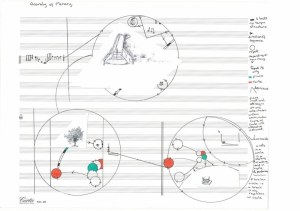
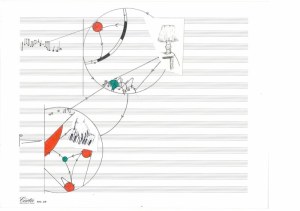
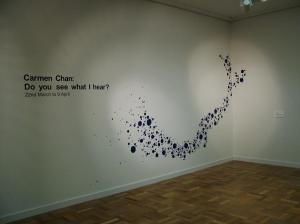
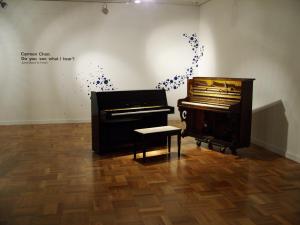
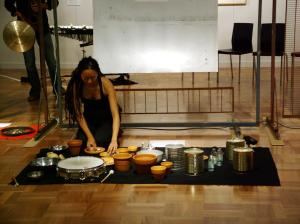
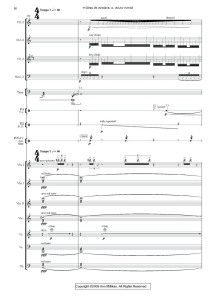
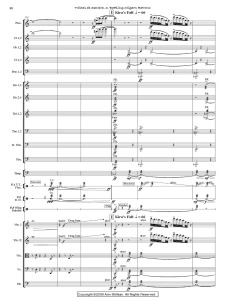
1 comment